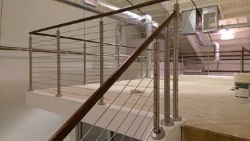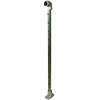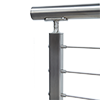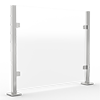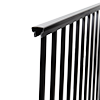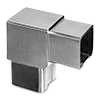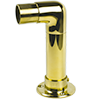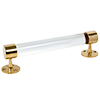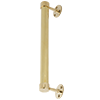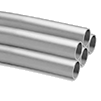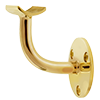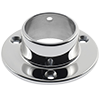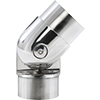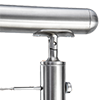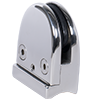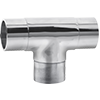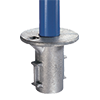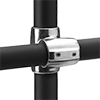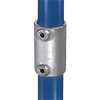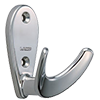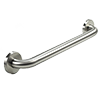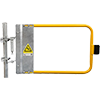Staircase Height Standards - Standard Dimensions for Steps
When it comes to the construction of an in-door staircase, the standard step height and standard step size will not only contribute to safety but also provide comfort.
These are crucial measurements regardless of whether there is a spiral staircase or traditional stairs. So, in this guide, we’re going to take an in-depth look at the standard step height code in the USA, help you measure the distance, and share a few useful insights.

Staircase Code Requirements in the USA
If you didn’t know, there are strict requirements for stair step size and depth, which ensures safety and comfort. So, we’re going over the essential factors including the tread depth and riser height, which you can measure and determine whether they comply with the USA building codes.
The following guidelines will clarify and answer the following questions:
- What is the standard step height?
- What is the standard tread depth?
- How to measure stair dimensions?
Building Codes for Stair Tread Depth
The thread depth is the surface of the staircase, which is the flat part of the staircase that you step on. The depth includes the entire surface, measured from the inner corner to the edge of the nosing or front end of the tread.
The standard tread depth in the United States is, at a minimum, 9 ½ inches. However, if the staircase doesn’t have nosing and open risers, the minimum tread depth should be 11 inches and no less. Hence, to stay within the USA tread depth code, the depth from the front edge of your steps to the corner where the rise starts must be between 9 ½ and 11 inches.
Let’s next learn how tall should a step be!
Building Codes for Stair Riser Height
The stair risers are basically the vertical distance, hence how tall should steps be!
In the United States, the standard stair height for an in-door staircase should not be less than 4 inches and must be 7 up to 7 ¾ inches at the most. In addition, the nose of each step must not exceed the riser by more than 1 ½", providing additional security and comfort when climbing the staircase. This is the typical stair riser height, which is an essential part of every staircase.
These codes and regulations are made to reduce the possibility of falling down the stairs and should be comfortable for the average person. Verifying that your staircase meets the national code is essential as the human body quickly adapts to the average stair riser height, and even the slightest variations in the stair height could potentially be a home hazard.
Additionally, if the staircase has open rise spaces, the space between the treads shouldn’t be larger than 4 inches in height.
How to Make Sure Your Stairs Meet Code?
If you want to make sure that your staircase meets the national USA code requirements, you need to do some measuring. This involves measuring the height and depth, and verifying that your staircase meets the standard step riser height and tread depth USA code requirements.
The steps below will show you how to make your measurements the correct way.
Step 1 - Measure the Tread Depth
Before we get into what is the standard height of a step, let’s first measure stride length, which is the leg length surface, where you step.
You’ll need a tape measure, to get the size of a step and the tread depth, starting from the front-end (nose) of the stair and measuring all the way back. The horizontal distance requirement is 9 ½ inches, up to 11 inches, so if your step depth aligns with the USA code requirements, the staircase is safe.
However, if you have spiral stairs the requirements are a bit different. For spiral stairs each tread must have a depth of at least 6 ¾" and shall not exceed 9 ½".
Step 2 - Measure the Stair Height
The next step is to measure the riser heights.
This is the height of a step on stairs, and the step length is the distance separating one step from the other. This dimension is the most important one, and the average step height should be a maximum of 7 ¾ inches and a minimum of 7 inches.
If you have a spiral staircase, the requirements are a bit different, and the average stair height must be 9 ½" according to the IBC 1011.10. This is pretty much a normal step height, considering the spiral stairs are much more complicated to build in comparison to straight and traditional staircases.
That was how to get the correct step dimensions, and the average step length by height.
Step 3 - Verify All Steps Follow the Code
Now that you know how tall are stairs, the final step is to verify that the tread depth and stair height is consistent throughout the entire number of steps and flight of stairs in the staircase.
As mentioned earlier, even the slightest variation in the riser height, or even in the tread depth, can cause someone to stumble while using the staircase.
Using a tape measure, ensure that the average height of the staircase shares equal stair height and tread depth dimensions for each step.
Wrapping Up:
So, in this guide, we’ve reviewed the staircase height standards as well as the necessary tread depth as per the national USA building code. We’ve learned that the height for stairs should be at least 4" and up to 7 ¾ inches maximum height. In regard to the tread’s depth, the minimum width should be 9 ½ inches.
We hope this guide was helpful!




